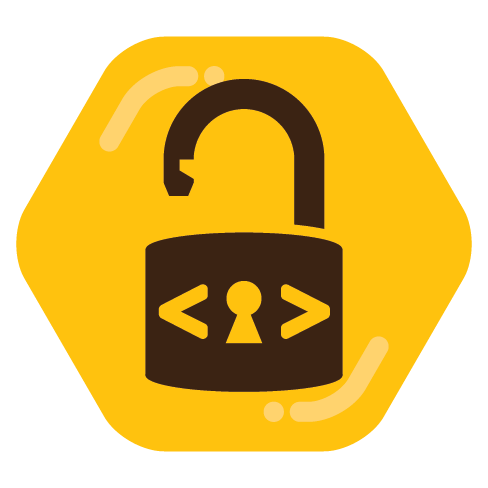The problem is not the RSA math itself but that it is both extremely slow and implementing it is particularly susceptible to bugs and side channel attacks https://blog.trailofbits.com/2019/07/08/fuck-rsa/
- 0 Posts
- 38 Comments

 14·3 months ago
14·3 months agoWait till you hear about the idiots who unironically make that argument for banning Bitcoin too

 5·3 months ago
5·3 months agoAccessing printers? Resolving hostnames of internal hosts? I can’t imagine having a lan without mDNS

 3·4 months ago
3·4 months agoThis would not be the default behavior of yt-dlp. Run
yt-dlp -vF <video>to view the sort order used. Acodec should come before abr.It used to be the behavior of the original youtube-dl, however.

 7·4 months ago
7·4 months agoResampling does not lead to any perceptible quality loss, but encoding to aac with libavcodec’s encoder (as YouTube does) definitely will. At the very least, it cuts all frequencies above 15 kHz which are potentially audible. Opus does not, and 128k opus is usually considered transparent.
I can’t find it but somewhere there’s a very detailed explanation from Monty himself about it

 12·4 months ago
12·4 months agoAre you using the very latest version? YouTube changed their site again a few days ago and it broke yt-dlps ability to find all thr formats. Update yt-dlp and it should be back to normal. yt-dlp will prefer the opus when it is available by default.
Opus is much better than (YouTube’s) m4a. m4a is better than mp3 (which is an obsolete 30 year old format). YouTube doesn’t serve mp3 (so creating one means re-encoding), and re-encoding lossy formats always loses quality.

 65·4 months ago
65·4 months agoThose are the wholesale prices to the utility company itself from the grid operators, not the prices to end users from the utility company. End users pay a flat amount per kWh that does not change by demand.

 2·4 months ago
2·4 months agoyt-dlp is pretty much the standard program for it https://github.com/yt-dlp/yt-dlp
It is installable as a python module, so it should be easy to sandbox if you need to (though it requires ffmpeg too). Nowadays I almost view it as a standard unix utility though and wouldn’t think twice about installing the native package

 81·6 months ago
81·6 months agoBefore trying the conversion, I suggest checking if you are missing a library that strawberry needs (probably libopus or libopusfile). For me, strawberry reads opus files perfectly normally, so I wonder if yours is falling back to using ffmpeg or something to decide them
If you really must convert, use Vorbis with the variable bitrate mode
-q6(or-q:a 6option in ffmpeg) which usually ends up around 192 kbps, or push it up one more to q7 which will be a little higher. This is the level that is usually transparent, but do keep in mind that any conversion between lossy codecs is much more likely to cause perceivable loss in quality than a conversion from a lossless source. Btw opus is the direct successor to Vorbis and is superior in quality per bitrate (128k is what YouTube uses and is indistinguishable the vast majority of the time). It’s probably better than 320k mp3 at least

 7·6 months ago
7·6 months agoOut of 4,037,953 GitHub user profiles with email addresses, we were able to identify 1,426,121 (35.3%) of them as men or women through their public Google+ profiles.
Could be a confounding variable in that the type of people who reveal their gender publicly might differ from those who don’t in some way that is also related to their contribution quality

 2·7 months ago
2·7 months agoYour Lemmy instance is censoring it

 27·7 months ago
27·7 months agoIt’s unfortunate that the other users are ignoring your actual question… You should still be able to bind qbittorrent to the wireguard interface, and you definitely MUST do so in order to make sure you’re safe (if the VPN drops, you don’t want it to fall back on your normal connection). If you aren’t sure what the wireguard interface is names, try running
ip abefore and after activating the VPN connection and compare them.Port forwarding allows other users to connect directly to your torrent client. Without it, it’s much more difficult for you to connect to other people who aren’t port forwarded (though not impossible if there’s a third, mutually connected client who can facilitate initiating the connection). Things will generally still work without it, but youll connect to fewer people, so it might be slower. And if you’re downloading rare torrents, you might have to be patient and wait for someone else to join and facilitate the connection

 5·8 months ago
5·8 months agoIt’s useful for security researchers to collect and analyze what the newest attack bots are trying to do, in order to learn how to defend against it and study the malware they drop. There are some cool videos on YouTube about decompiling malware dropped by the bots.

 13·8 months ago
13·8 months agoDistrowatch has a torrent RSS that can be added to qbittorrent to automatically fetch new releases https://distrowatch.com/news/torrents.xml

 373·8 months ago
373·8 months agoIt also might appear lower due to people using vpns for for torrenting on residential networks

 5·8 months ago
5·8 months agoIf only that comment contained a link explaining exactly what it is…

 2·8 months ago
2·8 months agoAre they attempting to listen on the same port, so one of them is failing to? Try setting a different port number for the two

 222·8 months ago
222·8 months agoIt was the point of software as a service and DRM

 31·8 months ago
31·8 months agoMaybe try Stash, it has gallery support too https://github.com/stashapp/stash
Also, what about jellyfin itself? It also supports photos

Perfect example of a (part of a) security vulnerability being fixed in a commit that doesn’t immediately seem security related and would never be back ported to a
stablestale distro